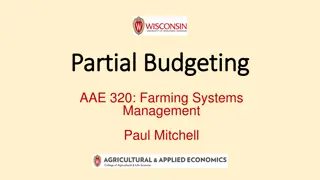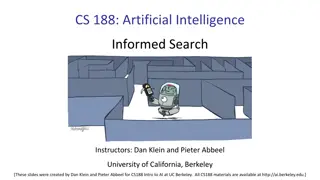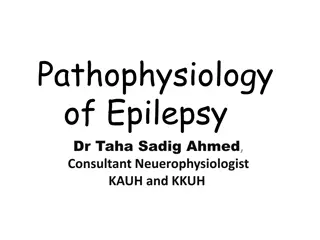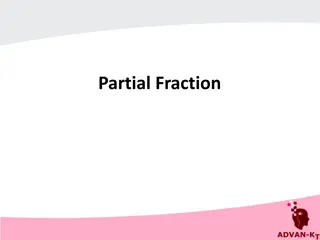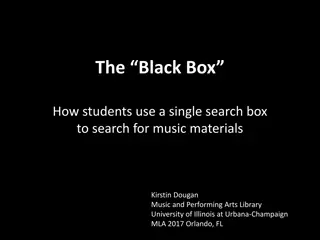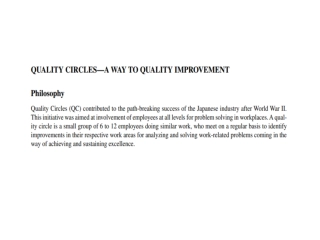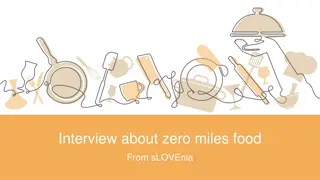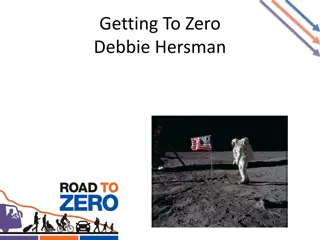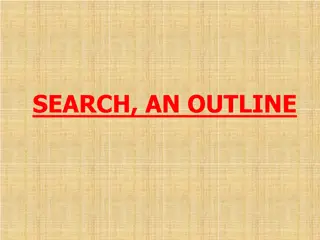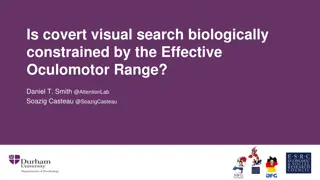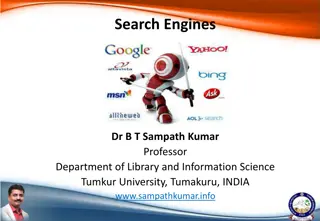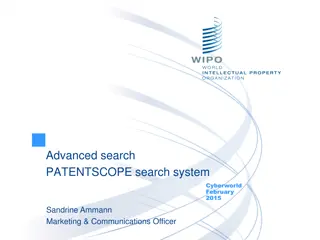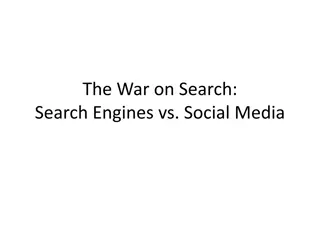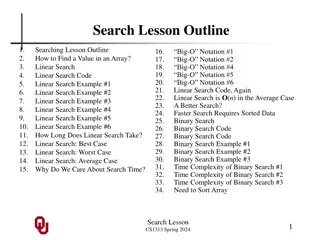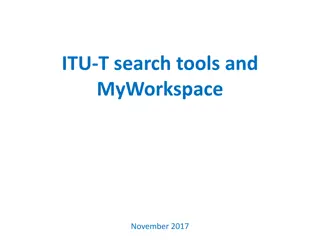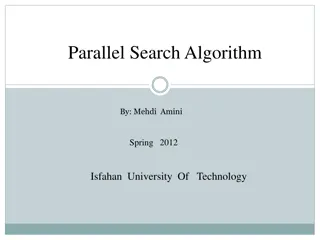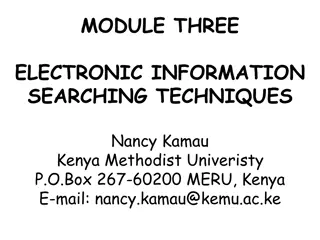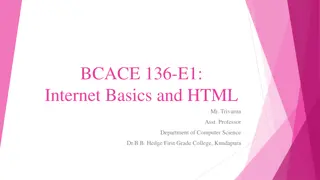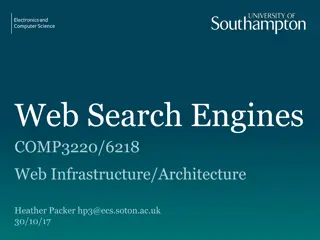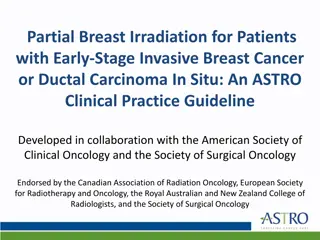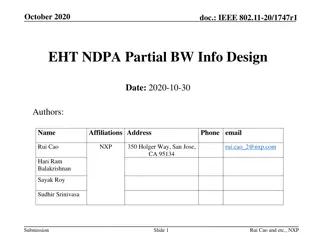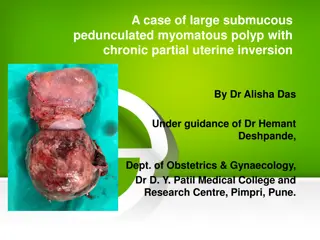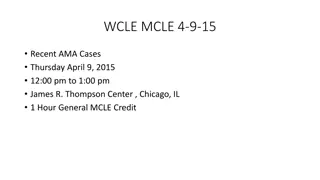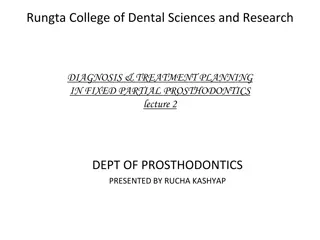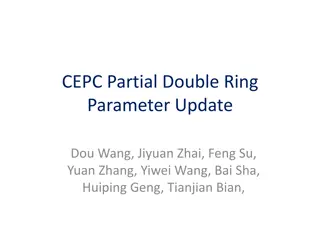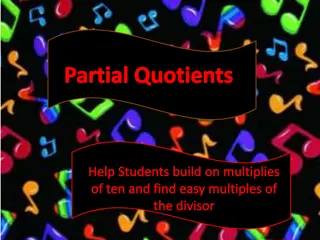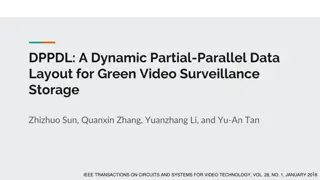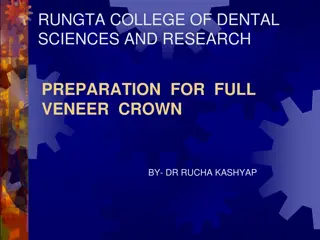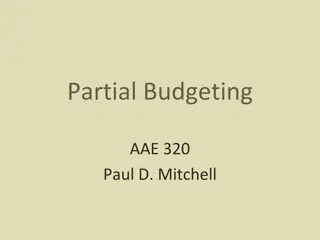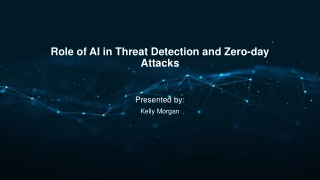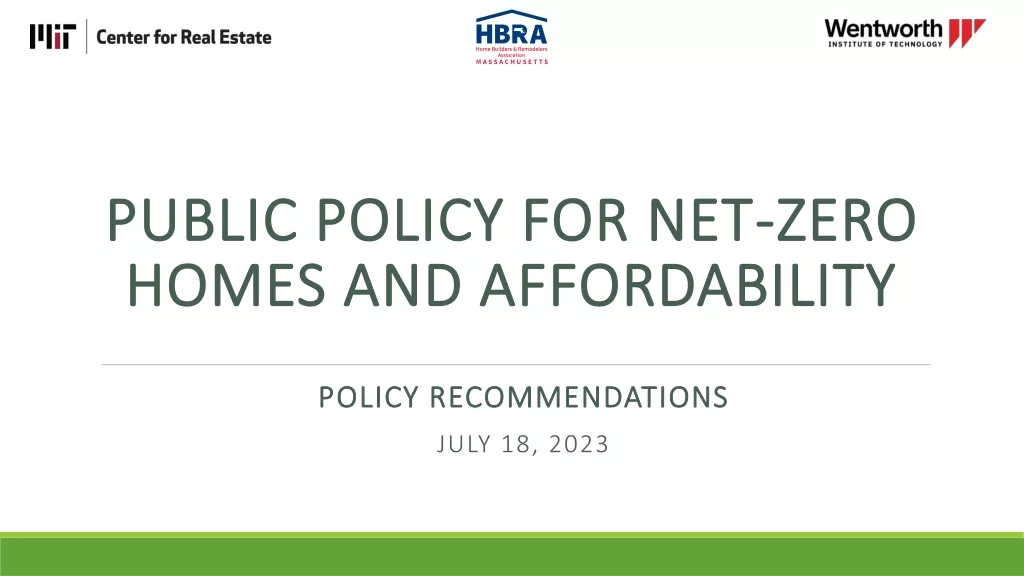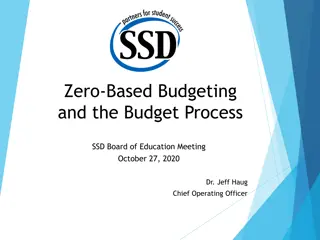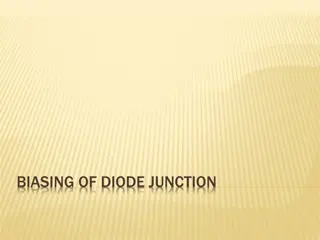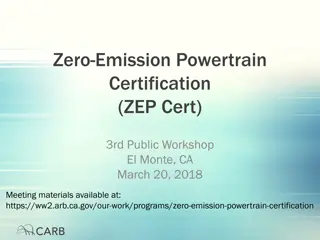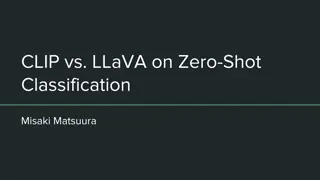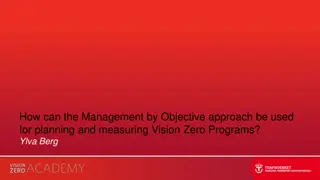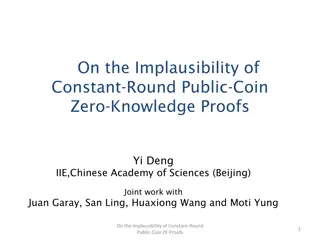Zero or Partial Percepts in Search
In the context of search with zero or partial percepts, agents may not have complete information about the current state in a partially observable environment. This article outlines the challenges of searching in such scenarios, including situations where agents have no observations or only partial information. It explores solutions for sensorless situations, manipulation in sensorless environments, and strategies for online search agents operating in unknown environments. Transition models, goal testing, and reachable belief states in sensorless and deterministic settings are also discussed.
Uploaded on Sep 16, 2024 | 0 Views
Download Presentation

Please find below an Image/Link to download the presentation.
The content on the website is provided AS IS for your information and personal use only. It may not be sold, licensed, or shared on other websites without obtaining consent from the author. Download presentation by click this link. If you encounter any issues during the download, it is possible that the publisher has removed the file from their server.
E N D
Presentation Transcript
Search with Zero or Partial Percepts The agent may not know the current state in a partially observable environment. Outline I. Searching with no observation II. Searching in partially observable environments III. Online search agents and unknown environments * Figures are from the textbook site (or drawn by the instructor) unless the source is specifically cited.
I. Sensorless Situation Agent s precepts provide no information at all. Sensorless solutions are surprisingly common. They can be robust due to zero dependence on sensors working properly. Knowledge of geography No knowledge about location and dirt distribution {1,2,3,4,5,6,7,8} Right {2,4,6,8} Suck {4,8} Left Suck goal {3,7} {7}
Sensorless Manipulation Tray Tilting Erdmann & Mason (1988): possible poses Orients the Allen wrench with eight tilts. Slow planar motion Coulomb friction IEEE Journal of Robotics and Automation, vol. 4, no. 4, pp. 369-379, 1988.
Solution to a Sensorless Problem A sequence of actions from search in the space ? of belief states (b-states). Full observability in ?: the agent always knows its belief state. 1. Transform the physical problem into a belief state problem. 2. Apply existing search algorithms. States (b-states): 2? possible subsets of the set of ? physical states. Initial state: ?. Actions: At the belief state ?, ACTIONS(?) = ? ?ACTIONS?(?) Action on a physical state
Transition Model Transition model: The new belief state is, deterministically, ? = ?????? ?,? = ? ? = ???????(?,?) and ? ?} Right or, nondeterministically, ? = ?????? ?,? = ? ? ???????(?,?) and ? ?} Right = ???????(?,?) ? ? Slippery version
Goal & Cost of Action Goal test: The goal is achieved possibly if one of the states ? ? passes the test; necessarily if every state ? ? passes the test. Action cost: Could be one of several values if the same action has different costs in different states.
Reachable Belief States (Sensorless & Deterministic) Only 12 are reachable out of 256= 28 b-states.
Subset and Superset States Prune a superset b-state to concentrate on solving the easier subset b-state. 5,7 {1,3,5,7} Prune a subset b-state if a superset b-state has been found to be solvable already.
Handling Search Space Complexity ? physical states 2? belief states! Use of compact description, e.g., mathematical logic (Chapter 7) e.g., Use nothing to represent the initial state. Incremental belief-state search to build up solution one physical state at a time. Initial state: {1,2,3,4,5,6,7,8} Find an action sequence that works for state 1. Check if it works for state 2. If yes, check if it works for state 3, and so on. If no, find a different solution for state 1, and so on.
II. Partially Observable Environments Many problems (e.g., the 8-puzzle) are unsolvable without sensing. A little sensing (e.g., only one visible square in the 8-puzzle) can go a long way. PERCEPTS ? = {percept received in the state ?} Several states may yield the same percept. Local-sensing vacuum world: The vacuum cleaner cannot sense the state of the adjacent square. ?: in the left square ?: in the right square Dirty: current square dirty {?, ?????} b-state {1, 3} Local-sensing vacuum world
Transition Model Between B-states Prediction: computes the b-state from an action ?. estimate ? ?2?3?4 ?1 ? = PREDICT(?,?) RESULT ?,? ? e.g., ? = {?1,?2,?3,?4} and ? = ?5,?6,?7,?8 ? ?6 Possible percepts: computes the set of percepts that could be observed in the predicted b-state. ?8 ?5 ?7 POSSIBLE-PERCEPTS ? = ? ? = PERCEPTS(?) and ? ?} ?2 e.g., ?1,?3 ?3 ?1 Update: computes the set of states in ? that could have produced the percept. POSSIBLE-PERCEPTS ? ??= UPDATE ?,? = ? ? = PERCEPTS(?) and ? ?} ?8 ?7 e.g., ??3= UPDATE ?,?3 = ?7,?8 ??3
Possible B-states from an Action RESULTS ?,? = ?0 ? over all ?0=UPDATE(PREDICT ?,? ,?) where ? POSSIBLE PERCEPTS(PREDICT ?,? )} ? ? Deterministic (local sensing) POSSIBLE-PERCEPTS ? ?0
(contd) Nondeterministic (local sensing + slippery world)
Solution with Partial Observation Apply the AND-OR search algorithm. Local-sensing vacuum world Initial percept: [A, Dirty] Solution: Suck Right if b-state={6} then Suck else [] Goal:
Prediction-Update Cycles Test the condition and execute the appropriate branch. Maintain its belief state as it performs actions and receives percepts. ? =UPDATE(PREDICT ?,? ,?) Consider the local-sensing vacuum world in which any square may become dirty any time unless being actively cleaned. update prediction update prediction
Robot Localization Problem Use a map to determine where a robot is located with respect to its environment. Perfect sensing (by four sonar sensors) Percept: 4 bits NESW (obstacle in the north, east, south, and west?) ?: set of all locations NESW = 1011 (obstacles in N, S, W) ?0= UPDATE(?,1011) // only four possible locations
Robot Localization Nondeterministic navigation: Action Right takes the robot randomly to one of the four adjacent squares. Next, the robot executes a Right action. ??= PREDICT(?0,??? ?) NESW = 1010 // One possible location! ?1=Update(??,1010)
III. Online Search Agents Offline search Compute a complete solution before taking the first action. Online search RESULT ?,? is unknown unless being in ? and doing ?. Interleaves computation and action by repeating the steps below: 1. Computes an action. 2. Takes the computed action. Unknown environment 3. Observes the environment. Good for search in dynamic or semi-dynamic environments. Allowing the agent to focus on contingencies that actually arise in nondeterministic domains.
Dead Ends Immediately after visiting ? and ?: Cannot tell whether it is in the top state space or the bottom one (because they look identical). Thus, no action exists to work in both state spaces.
Expensive Search Effort As if the state space is being constructed by an imaginary adversary. Whichever actions the agent chooses, dead ends and goals are placed deliberately to make the path inefficient. The situation is complicated by that some actions are irreversible. Design a search agent that works in safely explorable state space. Every reachable state can reach a goal state..


